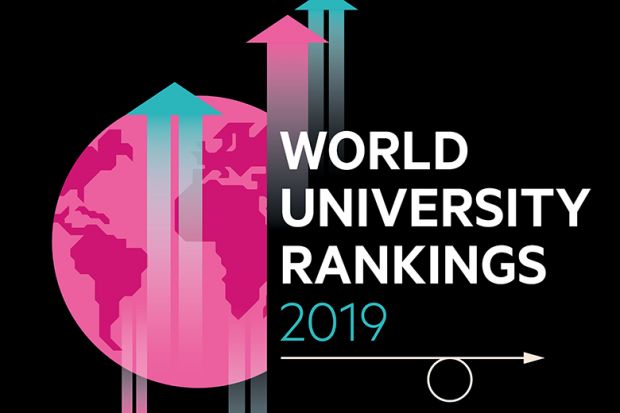Browse the full results of the World University Rankings 2019
China has stepped up its ascent of the Times Higher Education World University Rankings, with the country now home to the top institution in Asia for the first time under the current methodology.
Tsinghua University has overtaken the National University of Singapore to become the best university in Asia in the THE World University Rankings 2019 after rising eight places to 22nd, representing the greatest rise in the top 30. NUS dropped from joint 22nd to 23rd.
The rise means that Tsinghua now also outranks its Beijing neighbour Peking University for the first time in the global table, although Tsinghua has consistently had greater prominence in the THE World Reputation Rankings.
- Steer by your compass
- Critical intellectual infrastructure
- A future beyond borders
It is the first time that a Chinese university has topped Asia’s representatives under the current methodology of the world rankings (since 2011). NUS led the continent between 2016 and 2018, while the University of Tokyo was pre-eminent between 2011 and 2015.
Over the past year, Tsinghua has improved its citation impact, increased its institutional income and grown its international outlook, with greater shares of international staff, students and co-authored publications.
Yang Bin, vice-president for international affairs and provost at Tsinghua, said that recent efforts to increase internationalisation and improve the quality of the university’s teaching and research systems have “helped to escalate Tsinghua’s excellence and global reputation”.
THE World University Rankings 2019: top 10
| 2019 rank | 2018 rank | University | Country |
| 1 | 1 | University of Oxford | United Kingdom |
| 2 | 2 | University of Cambridge | United Kingdom |
| 3 | =3 | Stanford University | United States |
| 4 | 5 | Massachusetts Institute of Technology | United States |
| 5 | =3 | California Institute of Technology | United States |
| 6 | 6 | Harvard University | United States |
| 7 | 7 | Princeton University | United States |
| 8 | 12 | Yale University | United States |
| 9 | 8 | Imperial College London | United Kingdom |
| 10 | 9 | University of Chicago | United States |
Simon Marginson, professor of higher education at the University of Oxford and director of the Centre for Global Higher Education, said that he was “not surprised” by Tsinghua’s advance.
“It’s easily the number one university in the world for high citation research in mathematics and computing – a combined field in which China has now moved well ahead of the US and, further back, Europe. It is near the top of the world, and rising fast, in physical sciences and engineering,” he said.
“If Tsinghua is that strong now, imagine where it will be in five years with the continued increases in funding under the Double World-Class Project and more support from China’s enterprises for research. We are already at the stage where many of the world’s best physical sciences researchers want to work at Tsinghua, just as they see MIT, Berkeley or Cambridge as great places to be.”
Tsinghua is not the only Chinese riser in the table. Zhejiang University has climbed an impressive 76 places to 101st this year, thanks to improvements in its scores for all five metrics underpinning the teaching pillar, as well as research income, research volume, industry income and proportion of international students.
- Evolution and expansion
- East closes in on West
- Pathways to greatness
- Elevating influences for lower-ranked universities
Meanwhile, the Southern University of Science and Technology (SUSTech) has joined the ranking for the first time in the 301-350 band. The institution – located in Shenzhen, which is dubbed China’s Silicon Valley – is just seven years old and was established with the aim of quickly becoming a world-class university.
Overall, 72 Chinese universities feature in the table, up from 63 last year, making it the fourth most represented nation globally. Seven Chinese universities remain in the top 200 and five of these have risen; several lower-ranked institutions have also made progress. The country’s rise is largely driven by improvements in citation impact.
The data also show that the average teaching reputation score for China’s 10 leading universities is now on a par with the best higher education institutions in the UK and Germany, while China’s average research reputation score among this group is higher than that for the best-performing institutions in both France and Australia.
“What we are seeing is China going past everyone in Asia and moving towards the US,” said Professor Marginson, who added that “this is not just about funding or policy pressure to perform” as China’s “rapidly improving second layer” of universities are “below the radar of national policy and regulation”.
“There is an immense amount of collaboration within China and this vast network, plus all its international links, creates an immensely productive mega-environment as with the rise of American universities from 1950 to 1980,” he said.
Professor Marginson added that “improved publication and citation performance” in disciplines such as industrial and civil engineering, space research and big data was the “chief factor” driving improved research indicators and improved reputation of China’s top universities.
- Learning, at the highest level
- The rising tide of research
- Engagement with business brings a multitude of riches
- How the most international universities lure staff and students
Another key reason for China’s success is that its universities are “both top-down driven and bottom-up driven”, he said.
“From the top there is intensive central policy direction but not detailed local control, joined to high expectations and targeted but high and rising funding. From the bottom there are structures and cultures fairly similar to Western universities in the sciences,” he said, although he admitted that the bottom-up structures were “not so good” in the humanities and social sciences.
French mergers drive progress up ranking
France’s programme of university mergers is paying off, improving the research performance and international visibility of its top providers, according to the Times Higher Education World University Rankings 2019.
Paris Sciences et Lettres – PSL Research University Paris, a 2010 merger of numerous institutions, climbed 31 places to 41st this year, becoming the first French university to feature in the top 50 best universities since 2011. PSL made its debut in the global table last year.
Its teaching and research scores improved, driven by increased global visibility and votes in the academic teaching and research reputation surveys.
Meanwhile, Sorbonne University, which was founded in January this year following the merger of Pierre and Marie Curie University and Paris-Sorbonne University, has joined the list at 73rd place – making it the highest-ranked newcomer in the table.
The new Sorbonne, like its individual counterparts, has a particularly strong citation impact, but data show that the merger has boosted the institution’s teaching and research environments. The merged university also achieves a high score for international research collaboration.
- Transformation under way
- Toronto is happy at home
- Berkeley’s authentic, evolving story
- Say it – we are here to help
Last year, Pierre and Marie Curie University was ranked joint 123rd and Paris-Sorbonne University – Paris 4 took 196th place.
PSL president Alain Fuchs said that “assembling institutions with individually high performance in research, but [that are] small in size” has enabled the university to “reach a critical mass, and therefore to reach a threshold in terms of international visibility”.
Professor Fuchs predicted that other French university mergers would see similar success. “This is good news for our higher education system, which will now be ranked at its rightful position in the global higher education landscape,” he said.
Jean-Lou Chameau, former president of the California Institute of Technology who has been tasked with advising the French government on the amalgamation of five grandes écoles, said that “any improvement in the ranking is welcome”, but “lasting impact of a merger will only take place if it provides better opportunities and programmes for its student population and faculty”.
“It is still early to know which mergers will achieve true progress and which ones will be mostly affichage [display],” he said. “To truly compete with the best universities in the world, the French institutions need to develop truly integrated and agile governance and administration, better integrate research into education, encourage stronger competition and evaluation among research programmes, and place an enhanced focus on innovation and connection to the business world.”
POSTSCRIPT:
Print headline: China advances towards top of global league table
Register to continue
Why register?
- Registration is free and only takes a moment
- Once registered, you can read 3 articles a month
- Sign up for our newsletter
Subscribe
Or subscribe for unlimited access to:
- Unlimited access to news, views, insights & reviews
- Digital editions
- Digital access to THE’s university and college rankings analysis
Already registered or a current subscriber?








